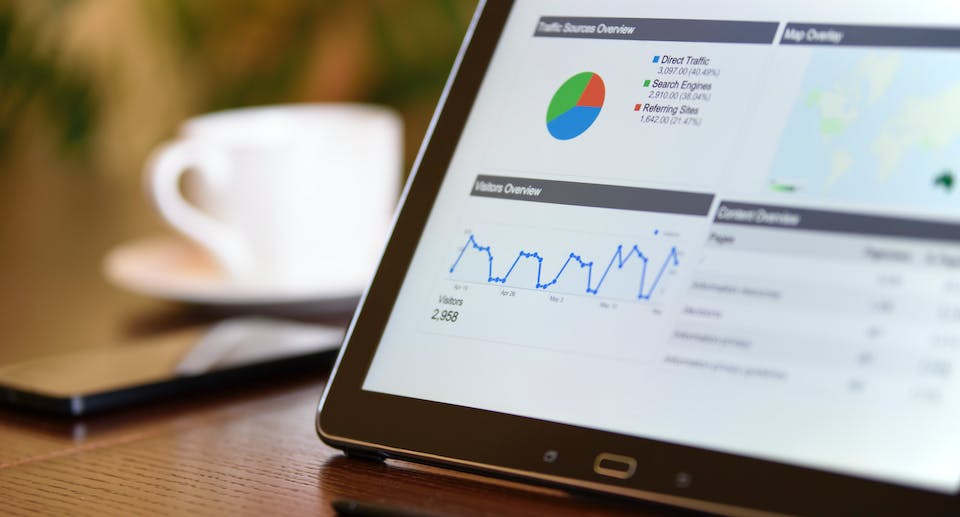
Winter, summer, holidays, or even unexpected events like pandemics — every business goes through busy and slow times. In marketing, seasonality refers to the patterns of higher or lower demand for products or services due to external factors. And it’s not just the traditional holidays that affect seasonality. Even weather and industry-specific events can have an impact.
To make the most of these changes and satisfy customer demand, you must either intensify or scale down your pay-per-click (PPC) campaigns accordingly. Here are some practical tips for PPC that will help you optimize your strategies and ads for any event.
Table of Contents
Identifying Your Business’s Seasonal Patterns
PPC advertising can be tricky when figuring out how to account for seasonality. First, you need to run a seasonality performance test to understand the patterns that affect your revenue and sales online.
To do this, you’ll need to use two valuable tools: Google Analytics and Google Ads. These platforms offer a treasure trove of data related to your website and PPC advertising, providing insights into user behavior, traffic sources, ad performance, and more.
Within Google Ads, Auction Insights is an essential tool for understanding seasonality in your PPC, as it shows you how your ads rank against your competitors for the same set of keywords.
Once you have all the data, segment it by month or quarter to see how your performance metrics vary, including cost-per-click (CPC), impressions, click-through rate (CTR), and PPC advertising costs and conversions.
Google Trends is also a good resource for identifying seasons, showing the search volume for relevant keywords over time.
What Are We Looking for in the Numbers?

Here’s what you should be analyzing your data for:
Spikes and Dips
Identify any significant increases or decreases in website traffic, clicks, or conversions during specific times of the year.
For example, the National Retail Foundation reported that U.S. retail sales hit a record $936.3 billion during the 2022 holiday season (November to December). So, as you can imagine, most retail stores saw a big jump in website traffic and PPC advertising clicks during that period.
High Competition
Auction Insights comes in handy here. If you’re in a highly competitive industry, like travel, your data might show a lot of competition during the summer months when demand is high. This competition means higher CPCs and more aggressive bidding.
Conversion Rates
Look at the changes in your conversion rates throughout the year. Do customers buy more during certain times? For instance, a fireworks business might see a significant increase in conversions on their PPC ads in the weeks leading up to the 4th of July holiday or New Year’s Eve.
Seasonality varies a lot by industry. However, if you can determine how your product or service fits the seasonal demand, you can use your data and adjust your budgets better.
Adjusting for Seasonality in PPC Campaigns
1. Set Goals for Peak and Off-Peak Periods
Like retailers who plan months ahead of the holiday rush, preparing well in advance is the best way to ensure your PPC advertising aligns with the shifting seasons. You need to be several moves ahead if you want to make the most of your budget and capture early shoppers’ attention.
The first step is setting clear goals for what you want your PPC campaigns to achieve. Your focus should be on maximizing sales and revenue during peak seasons, while in off-peak times, the game plan can shift to keeping your brand top-of-mind and engaging with your audience.
Clear goals also determine how much time and effort to invest in your PPC advertising.
2. Make Budget Adjustments
This is where PPC marketing budget allocation comes into play. Start by increasing your budget incrementally as the season approaches, allocating a more significant portion to high-performing keywords and campaigns with a proven track record of delivering results during peak times.
Likewise, gradually decrease your budget as demand slows down. However, be careful not to reduce it too abruptly because a sudden drop in visibility could cause you to miss out on late opportunities.
An essential tip for PPC: think at least one season, or a few months, ahead and start early to optimize your PPC advertising budget fully.
3. Select and Update Your Seasonal Keywords

Keyword optimization is a crucial component of adjusting for seasonality in PPC. Using tools like Google’s Keyword Planner, SEMrush, or Ahrefs’ Keyword Explorer, identify the specific words and search terms relevant to your products or services during high and low seasons.
Organize these into seasonal lists to make it easier to manage your campaigns. For instance, the Google Trends graph above shows that interest in keywords like “summer vacation” increases in the warmer months if you’re in the travel industry. That will go into the summer season bucket.
Ensure your PPC ad text is optimized with your keywords and reflects seasonal offers, promotions, or product relevance. E.g., “Amazing beach summer vacation deals.”
Finally, identify irrelevant or non-converting terms and add these to your campaign as negative keywords. These will tell Google where not to show your ads. For example, unless you’re a ski resort advertising a summer ski vacation, you can add “winter” as a negative keyword to keep your ads far away from anything related to cold weather.
4. Update Your Ad Messaging and Extensions
As mentioned above, using seasonal messaging in your PPC ad copy is as important as using the right keywords. And this is where you can let your creativity shine.
If you want your ad copy to hit home, use language that taps into the feelings and emotions associated with your product. For example, if you’re selling a summer swimsuit, talk about the feel of the sun on your skin and the sand between your toes.
Extensions are add-ons to your PPC ads that give more info and make them more relevant to your audience. They include links, prices, or phone numbers, typically appearing below your main ad text in search results.
Use them strategically to make your ads more informative and appealing for higher website traffic and conversion rates.
5. Landing Page Optimization
Your hard work has paid off, and your audience has clicked on your ads. The key to PPC campaign success is ensuring that the landing pages they arrive at deliver what your ads promised and provide a seamless experience. And since 53% of visitors abandon a mobile site if it takes longer than 3 seconds to load, that last part is essential!
Don’t make the customer hunt for what they came for. Your landing pages should prominently feature the offers, promotions, and products showcased in your PPC advertising. The website landing page below is an excellent example of an unmissable campaign.

Beyond the content, don’t forget to tweak the individual elements of your landing pages, like the headlines, images, and calls to action (CTAs), to match the season. For example, your landing page should feature festive deals and enticing gift ideas during the holidays.
6. Monitor and Adjust in Real Time
As with all advertising efforts, keeping track of performance and making adjustments is a continuous process with PPC advertising. In fact, setting up is only half the job.
Keep a close eye on key performance indicators like click-through rates, conversion rates, and ad spend to learn how your campaigns are performing and how to improve them.
Keywords can become less effective over time due to changes in how people use the internet or what’s popular. As such, regularly review which keywords work best and fine-tune your ad copy to keep your campaigns relevant.
Likewise, be quick to adjust your PPC advertising budget. Increase your spending on campaigns and keywords that are performing well, and cut back on those that aren’t.
Let Coalition Do the Work For You
With Google alone visited over 87 billion times a month, harnessing the power of PPC advertising can be a game-changer for your business.
As the tips for PPC above show, seasonality offers challenges and opportunities, and adapting your strategy is essential for success.
Ready to take your PPC advertising to the next level?
Coalition Technologies has a proven track record of helping clients generate millions in revenue through data-driven PPC marketing strategies. We understand the nuances of seasonality in PPC and are here to guide you in optimizing your campaigns.
Contact us for a free strategy review today to maximize your online presence and achieve outstanding campaign results.


